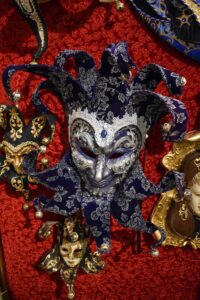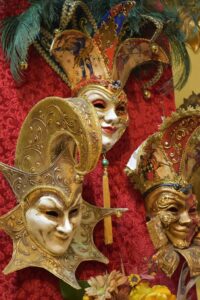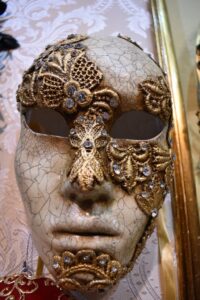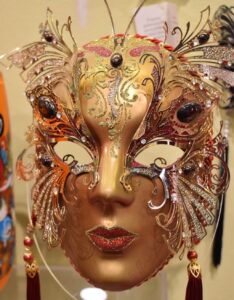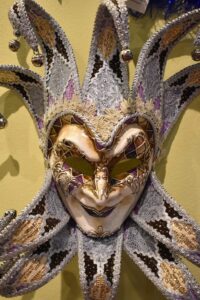In Shkodra, there is one of the most important factories for the artisan manufacturing of Venice art masks with a variety of different styles of masks, diversified colours, decorations, and themes, characters such as the famous Harlequin, Columbina, the Plague Doctor, and many other popular characters of art comedy.
Carnivals are enjoyed wearing charming costumes and extraordinary masks. The idea behind a masquerade party involves mask-making of classic and historical themes, but also modern and original patterns. Masks are a homage to the origins of carnivals dating back as far as a thousand years ago. The mask helps conceal a person’s true identity, making it mysterious. In past centuries, masks allowed people of different social classes to get together and share hilarious moments.
Edmond Angoni, who runs this art mask factory and has widely enhanced its reputation, creates artisan masks in line with the traditional method of pressed paper mache.
In the process of its making, each mask goes through the hands of 10-13 artisans. First, choose the character and design it, then a mould is created out of clay and worked in line with the traditional typology; once dry, liquid plaster is then cast into it to create a negative mould, which serves as a basic form in mask-making.
Releasing the negative mould from the clay mould is carried out by means of layering pieces of papier mache, impregnated with sticky paste (flour and water, which are boiled until a gelatinous adhesive mass is created). The papier mache pieces are compressed and adjusted by hand into negative moulds to get the most precise shape and are left to dry. Further, the trim and eyes slots are cut out with a hole punch or scissors on the dried masks, the mask is painted white and prepared to gild and bejewel it.
The gilding and bejewelling process are accomplished by hand-made painting materials, with foglia d’oro (gold or silver leaf), with colourful natural plume feathers, glue, metals with floral elements, macramé (small embroidery) leather, and decorative gemstones. This whole process ends with ageing and glueing of the cords or ribbons to be face fastened.


